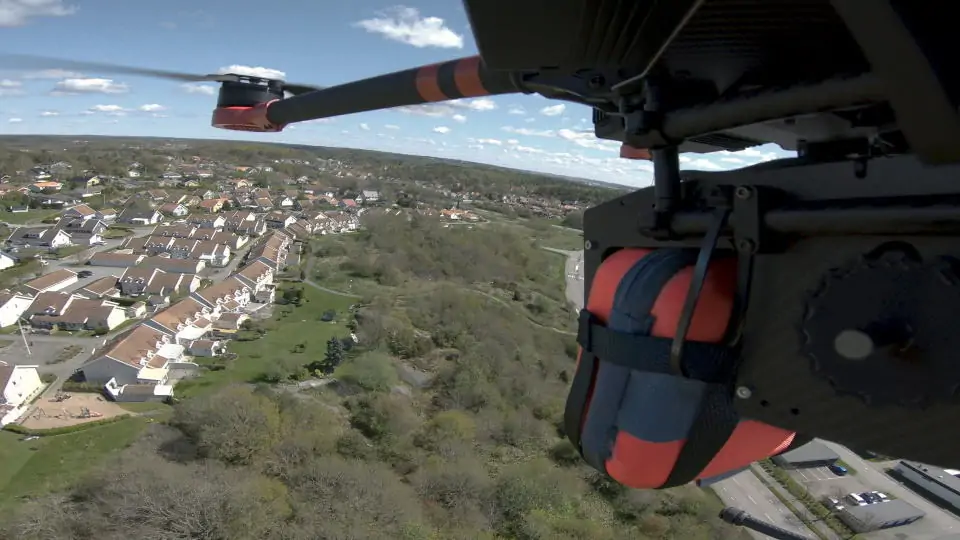
Everdrone has begun deploying a new automated unmanned aerial vehicle (UAV) system that delivers Automated External Defibrillators (AEDs) to the scene of cardiac arrests. The system is intended to give bystanders the ability to initiate life-saving measures while awaiting professional medical care.
Out-of-hospital cardiac arrests affect approximately 275,000 individuals in Europe every year, and carry a survival rate of about 10%. Research suggests that when CPR and early defibrillation is initiated within the first few minutes, the survival rate could potentially increase to as much as 70%. The new service is currently available to more than 80,000 residents in the Gothenburg area of Sweden, and is part of a clinical study in collaboration with Sweden’s national emergency call centre, SOS Alarm, and the Centre for Resuscitation Science at Karolinska Institutet (KI).
The initial study will run for approximately four months, using three drone systems at designated locations ready to respond to emergency 112-calls immediately for emergencies occurring within a radius of 6 km. When the drone arrives at the scene, it lowers the AED to the ground while hovering in place at a height of 30 metres, thus significantly reducing risks associated with drone operations over people.
Mattias Regnell, Head of Innovation and Research at SOS Alarm, said: “In the event of a cardiac arrest, the drone is dispatched at the same time as the ambulance and will certainly be the first to arrive on the scene. Our operators are ready to instruct bystanders on how to initiate the life-saving device.”
Mats Sällström, CEO of Everdrone, commented: “By combining our state-of-the-art drone platform and know-how in the regulatory space, we are finally able to launch this life-saving application. The collaboration with SOS Alarm and KI has been absolutely crucial for the realization of the concept in terms of being able to perform a swift alarm response, and to manage the medical and ethical issues involved.”
“The method of lowering the defibrillator from the drone with the help of a winch is something we have been developing and testing for a long time. We have performed countless test deliveries in recent months, and the results show that the method works very well.”
Everdrone is one of only a few companies in the world to be granted permission for urban drone operations, due to the company’s excellent safety record and precautions, and a long-standing relationship with authorities.
“Safety is at the core of everything we do at Everdrone. Even though the drones we use are extremely safe in themselves, we still need to foresee every conceivable fault scenario and put solutions in place to handle them. The system must contain a great many functions that overlap and complement each other, to ensure that no single point of failure can lead to an accident,” added Sällström.
Everdrone’s flight system features advanced obstacle avoidance functionality built on Intel RealSense technology, intelligent route planning to significantly reduce flight time over people, and a certified onboard parachute system to mitigate risk to people on the ground in the case of a bird strike or critical propulsion failure.
The outcome of drone operations will be continuously monitored and evaluated within a research study conducted by KI. The results of the study will be presented by KI later this year, with the hope of expanding operations to other parts of Sweden and Europe in the near future. The project has received funding from the Eurostars-2 Joint Programme, with co-funding from the European Union’s Horizon 2020 Research and Innovation Programme.
Andreas Claesson, Associate Professor at KI, stated: “We see enormous potential for this type of fully-integrated drone system. This study is unique, the first of its kind in the world, and we look forward to objectively evaluating the project together with Everdrone and SOS Alarm.”


















